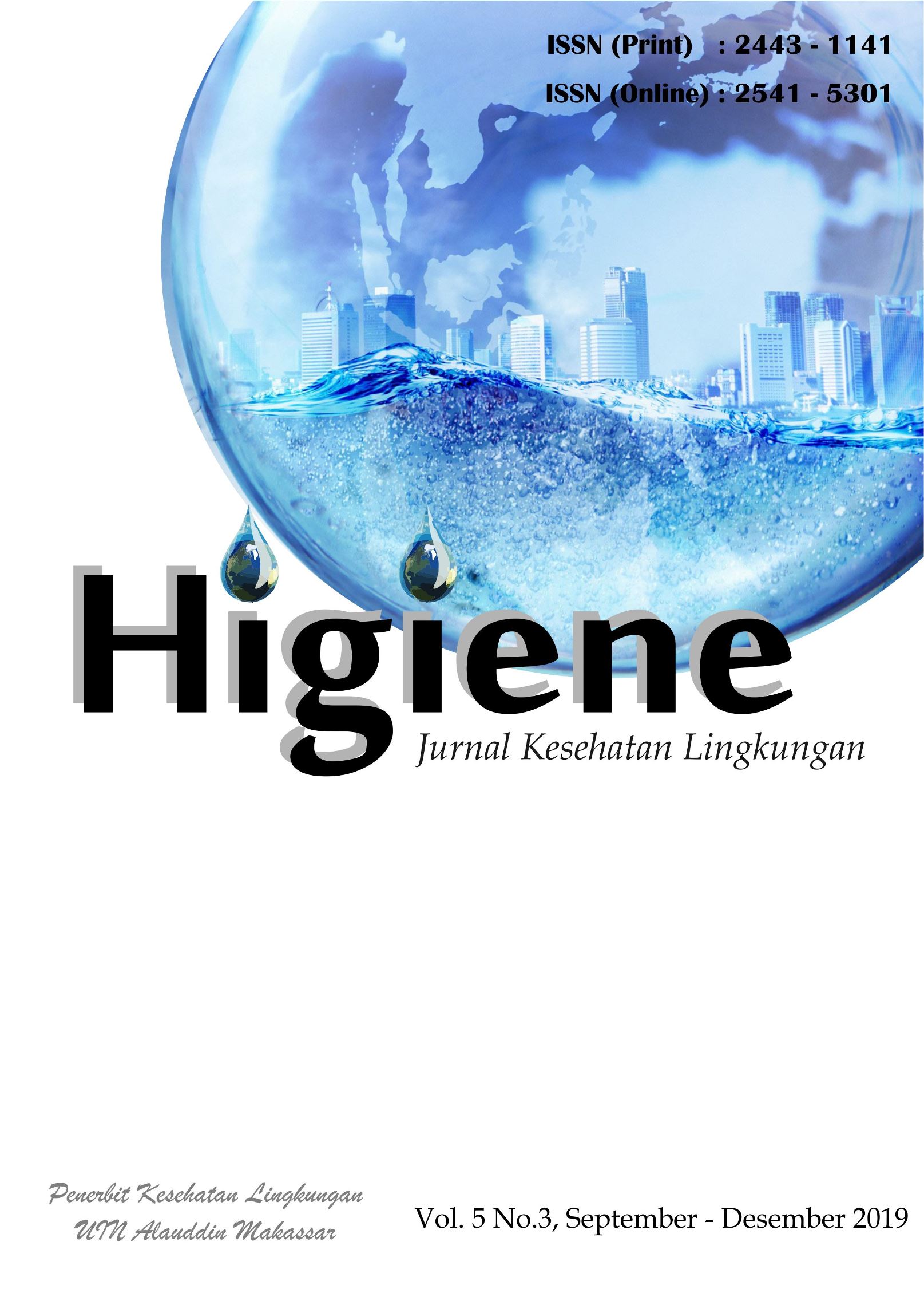Partisipasi Masyarakat Dalam Pengendalian Vektor Demam Berdarah Dengue (DBD) di Wilayah Kerja Puskesmas Turikale Kabupaten Maros
Abstrak
Dengue Haemorrhagic Fever (DHF) is a communicable disease which is caused by a dengue virus transmitted by Aedes aegypti mosquitos. This disease is indicated by symptoms such as sudden high fever around that runs 2-7 days without identifiable warnings, limp, faint, anxiety, heartburn, red spots on skin caused by minor bleed (petechia), and rash (purpura). Vector control, as one of Dengue Haemorrhagic Fever eradication strategies, will be successful with full participation from community members. This research develops a community empowerment program by using Participatory Action Research (PAR) to eradicate Dengue Haemorrhagic Fever. It employs quasi experimental method to examine the issue. the samples consist of 34 respondents who are selected by using total sampling technique and divided into two groups namely intervention group and comparison group. The research findings reveal that the community empowerment program improves community’s knowledge, attitude and action in both groups, as indicated by a paired t test value of = 0.000 in intervention group, and paired t test values of = 0.000 for knowledge, = 0.263 for attitude, and =0.063 for action in the comparison group. The findings also show that the intervention group has successfully decreased more larval density than the comparison group, as indicated by a mean value of ABJ=48% , HI= 47, CI= 11, BI= 70 which is higher than a mean value of ABJ = 20%, HI=21, CI=3 dan BI=21. Therefore, it can be concluded that there is significant difference in the knowledge, attitude, and action of respondents before and after the intervention programs, as signified by the first and second measurement. In conclusion, this research encourages community members to improve their participation in the Dengue Haemorrhagic Fever prevention program held by health centres so that the Dengue Haemorrhagic Fever eradication program can be successful.
Keywords: Dengue Haemorrhagic Fever (DHF), participation, PAR theory
Referensi
Dinas Kesehatan Kabupaten Maros (2017). Profil Kesehatan Kabupaten Maros Tahun 2017. Maros
Dinas Kesehatan Provinsi Sulawesi Selatan (2017). Profil Kesehatan Provinsi Sulawesi Selatan Tahun 2017. Makassar
Ernawati,K.,Yusnita., Dewi, C, Fathul J. & Sophianita. (2018). Peningkatan Pengetahuan Tentang Program Demam Berdarah Komunitas Ibu Rumah Tangga: Hasil Dari Satu-Hari Penyuluhan Kerjasama Antara Perguruan Tinggi dan Masyarakat di Jakarta Pusat. Journal Community Medicine and Public Health 2:1-5
Lubis, D., Purnama, S.G., Ekawati , K . & muliantari N, 2012. Asosiasi Pengetahuan Tentang Demam Berdarah dan Upaya Pemberantasan Sarang Nyamuk Di Kelurahan Sesetan, Denpasar Selatan, Bali. Archive of Community Health.1:1-15
Notoatmodjo, S. (2003).Pendidikan dan Ilmu Perilaku. Jakarta: Renika Cipta.
Saleh, M., Aeni, S., Gafur, A., & Basri, S. (2018). Hubungan Pemberantasan Sarang Nyamuk (PSN) dengan Keberadaan Jentik Nyamuk Aedes aegypti di Wilayah Kerja Puskesmas Pancana Kab. Barru. HIGIENE: Jurnal Kesehatan Lingkungan, 4(2), 93-98.
Sugiyono,. Sridartono. (2016). Pengaruh Pelatihan Pencegahan Demam Berdarah Dengue (DBD) terhadap Tingkat Pengetahuan dan Sikap Siswa Di SDN Wirogunan I Kartasura Kabupaten Sukoharjo. Jurnal Kesehatan. 9.86-91
Suroso, T. (2004). Situasi Epidemiologi dan Program Pemberantasan DBD di Indonesia. Makalah Seminar Kedokteran Tropis Kajian KLB Demam Berdarah Dengue dari Biologo Molekuler Sampai Pemberantasannya. D.I Yogyakarta : Pusat Kedokteran Tropis. Fakultas Kedokteran Universitas Gadjah Mada
Trapsilowati,W., Mardihusodo, S J., Prabandari, Y S,. Mardikanto,T. (2015). Partisipasi Masyarakat Dalam Pengendalian Vektor Demam Berdarah Dengue Di Kota Semarang Provinsi Jawa Tengah. Balai Besar Penelitian dan Pengembangan Vektor dan Reservoir Penyakit, Badan Litbangkes Kemenkes. Universitas Gadjah Madah. 7:15-22
##submission.copyrightStatement##
##submission.license.cc.by4.footer##Informasi Hak Cipta
KEBIJAKAN HIGIENE : JURNAL KESEHATAN LINGKUNGAN (AKSES TERBUKA)
Syarat yang harus dipenuhi oleh Penulis sebagai berikut:
- Penulis menyimpan hak cipta dan memberikan jurnal hak penerbitan pertama naskah secara simultan dengan lisensi di bawah Creative Commons Attribution License yang mengizinkan orang lain untuk berbagi pekerjaan dengan sebuah pernyataan kepenulisan pekerjaan dan penerbitan awal di jurnal ini.
- Penulis bisa memasukkan ke dalam penyusunan kontraktual tambahan terpisah untuk distribusi non ekslusif versi kaya terbitan jurnal (contoh: mempostingnya ke repositori institusional atau menerbitkannya dalam sebuah buku), dengan pengakuan penerbitan awalnya di jurnal ini.
- Penulis diizinkan dan didorong untuk mem-posting karya mereka online (contoh: di repositori institusional atau di website mereka) sebelum dan selama proses penyerahan, karena dapat mengarahkan ke pertukaran produktif, seperti halnya sitiran yang lebih awal dan lebih hebat dari karya yang diterbitkan. (Lihat Efek Akses Terbuka).

